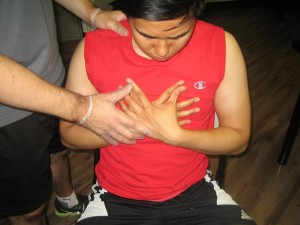Acute respiratory distress syndrome causes depleted levels of oxygen in the bloodstream which results to damage to other vital bodily organs. This is usually brought about by another underlying condition or injury and can be dangerous.
https://www.youtube.com/watch?v=qmV4fmkziJE
What are the causes?
There are various medical conditions that causes acute respiratory distress syndrome such as:
- Pneumonia
At the start, the individual feels as if there is not enough air that fills the lungs during breathing that is accompanied by rapid breathing. - Sepsis
- Excessive bleeding due to significant trauma to the head or chest
- Inhalation of dangerous substances particularly smoke or noxious fumes
Risk factors
Some of the risk factors include the following:
- Pneumonia
- Direct damage to the lungs
- Conditions that indirectly or directly involve the lungs
- Pancreatitis
- Inhalation of harmful fumes
- Fat embolism
- Using a ventilator
- Near drowning
- Sepsis
- Reactions to medications
- Excessive bleeding from trauma
- Chest injuries
What are the indications?
At the start, the individual feels as if there is not enough air that fills the lungs during breathing that is accompanied by rapid breathing.
The other symptoms that might manifest are based on the underlying cause of acute respiratory distress syndrome. There are also instances where there is confusion, hypotension or significant fatigue that indicates that insufficient oxygen is supplied to the vital bodily organs.
Management
The treatment for acute respiratory distress syndrome is done in a healthcare facility, specifically in an intensive care unit. The objective of treatment is to improve the level of oxygen in the blood and providing supportive care. Some of the treatment options include the following:
- Oxygen therapy – this aims on improving the level of oxygen in the body. A mask is fitted in the mouth in which oxygen is administered. If there is no improvement, oxygen is given via a breathing tube. The breathing tube is connected to a ventilator that supports breathing to improve the oxygen level in the blood.
- Supportive care – this aims on relieving the symptoms, prevent complications and improve the quality of life. This approach includes pain medications, monitoring of the heart and lung function, improved nutrition, treatment of infections, administration of fluid and prevention of blood clots.

